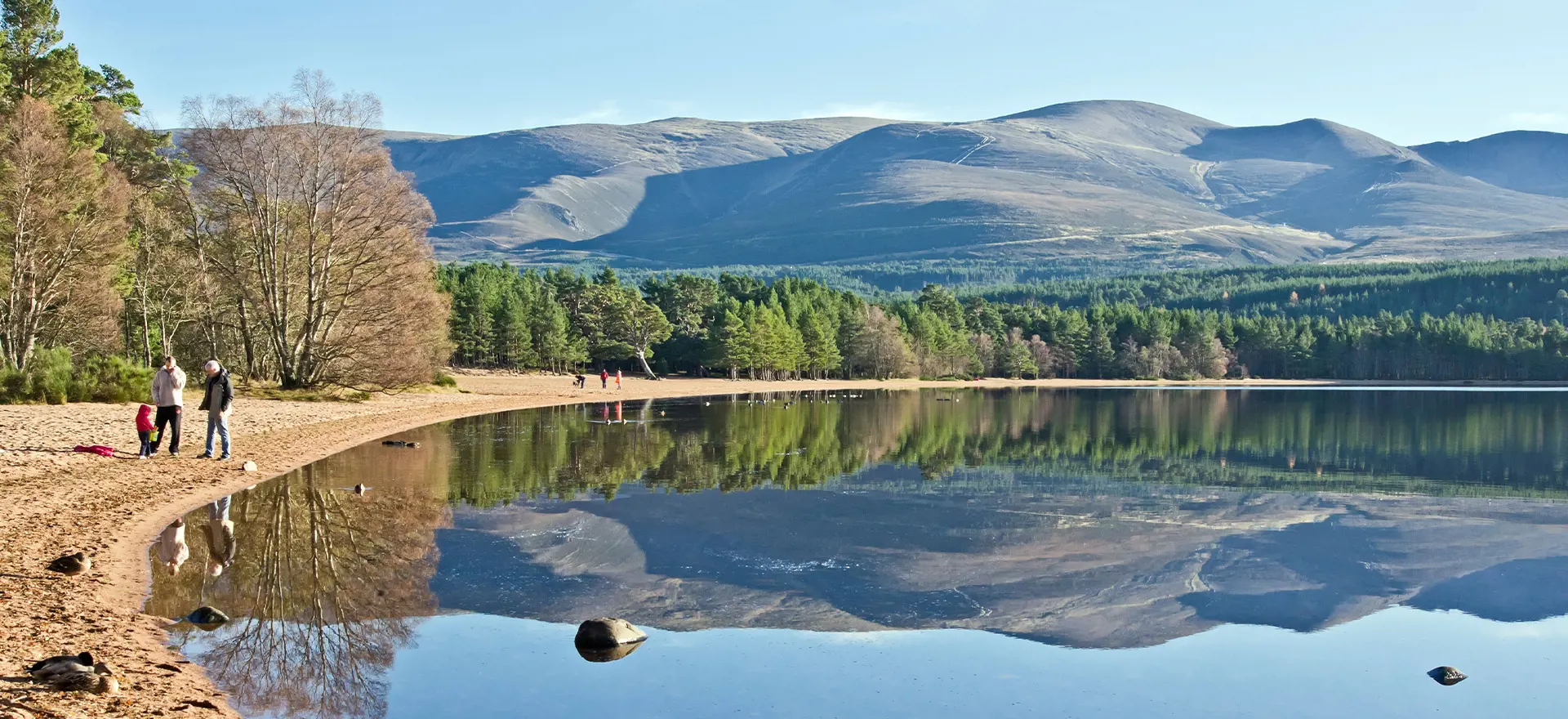The here and now
Tourism contributes more than £4 billion to the Scottish economy each year, making it one of its main growth industries
[1]. Now that travel is starting to return to pre-Covid levels, the tourism industry in Scotland is growing faster than anticipated, with provisional data from the Office of National Statistics
[2] for the first quarter of 2023 showing that tourist spending in Scotland in the first quarter of 2023 was 70% higher than pre-Covid levels.
The data shows that overseas tourists spent a total of £359 million in Scotland during this period, compared to £210 million in the same period in 2019. This was made up of 572,000 overnight visits from overseas visitors and is a 29% increase. In addition, British residents took 2.7 million overnight trips in Scotland in the first quarter of 2023, with £641 million spent
[3].
In comparison, the provisional data from ONS shows that the visitor numbers to England and Wales in the first quarter of 2023 have not yet returned to pre-Covid levels. The continued growth of Scotland’s tourism industry is therefore clearly important to the Scottish economy. The way in which the planning system supports future tourism development will therefore be key to influencing its continued success.
Sustainable Tourism
In terms of deciding where new tourism related development might be located and indeed how the continued growth of the sector can be encouraged – this will now be guided by Scottish Government’s newly adopted National Planning Framework 4 (NPF4) and new-style Local Development Plans, which will be put in place by local authorities in the coming years.
NPF4 places an emphasis on sustainable tourism and adopts the World Tourism Organisation’s definition as follows:
“
Tourism that takes full account of its current and future economic, social and environmental impacts, addressing the needs of visitors, the industry, the environment and host communities”.[4]
But what does this mean for tourism related development at a local level and how can sustainable tourism be delivered on the ground through the planning system?
Lessons can be learnt from successful tourism destinations like Aviemore, in the Cairngorms National Park, which has developed from a ski-resort to become a popular year-round tourist destination. Aviemore is accessible by public transport, with a train station in the town centre, which means it is easier for visitors to get to by means other than by private vehicle. It also unlocks several opportunities for nature tourism, by promoting access to many different outdoor activities, and it offers several hotel resorts and holiday-let apartments which cater to a wide range of needs, including for families and solo travellers. The town also manages its tourism offering alongside a resident population that are supported by a town centre that includes both shopping and leisure facilities, alongside employment opportunities for locals.
In some cases, if tourism is not managed effectively, it can have a detrimental effect on local communities; for example, by driving property prices up, particularly in rural and coastal areas
[5], which in turn can drive out local residents and potentially cause disruption to the local culture and vitality of certain areas. This has occurred in some areas in Scotland and measures to avoid this have been discussed in recent years. In Edinburgh, a tourist tax on accommodation is planned and will be brought into force once the required legislation has been passed by the Scottish Parliament. Additionally, new legal requirements for short-term lets have been introduced at a national level
[6]. The City of Edinburgh Council and The Highland Council have both introduced licencing schemes and control areas for short-term lets as a method to try and reduce impacts from tourism on local communities and housing supply.
Thoughts for the future
To achieve sustainable tourism, local planning authorities will want to carefully balance tourism expectations, including future development, with the needs of local residents. This can be complex because some local residents will depend on tourism for their livelihoods and some will not and each will have differing needs and expectations. For many areas tourism is a significant element of the local economy but to be sustainable a balance needs to be struck between social, environmental and economic aspects.
In the context of NPF4, every local authority in Scotland will need to prepare a new Local Development Plan. When preparing these, local authorities should think carefully about their future tourism policies and what drives sustainable tourism. In doing this, they should consider:
-
their unique selling point;
-
where and what type of tourist accommodation is needed and likely to be in demand (e.g. there should be a range of places for visitors to stay that meet a range of needs in terms of the type of accommodation available, as well as affordability);
-
how a coordinated approach to transport can be achieved, enabling people to transfer easily between services which will in turn encourage tourists to leave their car behind. Active travel is also extremely important and joined up thinking to promote active travel networks that are well connected to the wider public transport network can be important for encouraging people to access the outdoors;
-
with the rise of overnight stays in Scotland, local authorities should build on this success and think about how to encourage people to stay longer, to engage with local communities and make the most of their trips in their area; and
-
to ensure places align with local community priorities, while also attracting and appealing to tourists, local authorities should think about the wider facilities that are available to tourists – because providing for tourists is wider than developing a single tourist attraction. Local authorities should therefore think about what facilities are needed (e.g. restaurants, shops, leisure and cultural facilities) and how and where to deliver these to compliment tourist related development and growth.
On that basis, as a way of summing up – while policies will need to respond to the individual circumstances of the local area, there are common themes that should be taken into account. Tourism policies need to be positive and provide flexibility and, where appropriate, they should also aim to:
-
identify suitable locations for tourism development, maximising synergies with existing tourist attractions and unlocking new tourism opportunities through a co-ordinated approach to sustainable transport options, including active travel networks.
-
integrate developments within their surroundings (both in terms of design and layout) in a way that avoids adverse impacts to neighbours, while ensuring that tourist related development can operate effectively and are not compromised;
-
promote access to and the conservation of cultural heritage, including historical sites. This can include sensitive restoration projects, or indeed the diversification of rural estates through tourism related development;
-
encourage access to the outdoors and natural resources, while protecting the natural environment, wildlife and resources;
-
maximise the socio-economic benefits of tourism – this will include encouraging opportunities for new jobs and the creation of attractive/ useable places for communities who live in tourist destinations;
-
encourage tourism related development that is inclusive, accessible and appeals to a range of needs (e.g. solo travellers, families etc); and
-
support tourism related development which encourages year-round tourism and reduces the impacts of seasonality.
How can we help?
Lichfields is ready to help both the public and private sectors understand how best to maximise their tourism potential through their future planning policies and development ideas.
- Site promotion - We can assist those in the tourism industry make representations to their local planning authority to achieve better outcomes for the sector through emerging Local Development Plans.
- Local Development Plan evidence – We can assist local authorities develop their evidence base and develop appropriate, robust tourism policies.
- Planning applications and appeals - From project inception to completion, we provide effective leadership to navigate through the planning application and appeals processes, combining our technical know-how with local knowledge and contacts.
- Environmental Impact Assessments – We can prepare EIA Screening and Scoping requests to local authorities, as well as the coordinate EIA Reports/ Environmental Assessments.
- Community consultation – We offer the full range of digital, virtual and more traditional forms of consultation, all of which are integrated with our planning services.
- Lichfields products – We have a number of specially developed tools to help tackle specific planning and development challenges. This includes:




[1] https://www.nature.scot/professional-advice/social-and-economic-benefits-nature/tourism
[2]https://www.ons.gov.uk/peoplepopulationandcommunity/leisureandtourism/datasets/estimatesofoverseasresidentsvisitsandspendingintheuk
[3] https://www.visitscotland.org/research-insights/about-our-visitors/uk/overnight-tourism-survey
[4] Page 156 (Part 3 – Annexes), National Planning Framework 4: https://www.gov.scot/publications/national-planning-framework-4/documents/
[5]https://www.ons.gov.uk/economy/inflationandpriceindices/articles/housepricesintouristhotspotsincreasinglyoutofreachforyoungandlowpaid/2021-09-28[6] https://shorttermlets.campaign.gov.scot/







